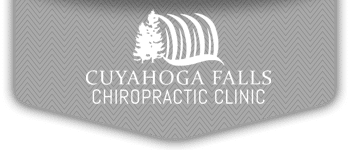Is There a Difference Between Physical Therapy & Physiotherapy?

Is There a Difference Between Physical Therapy & Physiotherapy?

Updated on November 19th, 2019 by Dr. Ryan Meehan
‘What would help me recover faster from an injury: physical therapy or physiotherapy?’ It’s a common question around our offices. Many patients wonder what the difference is between the two and which would be better suited for their injury or healing process.
Well, the good news is that patients don’t need to worry about this, because there is no difference. In practice, both terms for physical rehabilitation mean the same thing. No matter what you call them, the goal is to help patients prevent injury, improve flexibility, restore functional mobility, and manage pain. Anyone practicing in the U.S. must have a Doctor of Physical Therapy (DPT) degree, complete about 30 clinical hours, and pass the board exam in physiotherapy. For this reason, we often say that chiropractors practice physiotherapy. But, it’s safe to say that physical therapy and physiotherapy are essentially synonyms.
You may still be asking why there is different terminology for the same thing. Let’s take a look at the reason for this confusing jargon and what patients can expect from rehab services at Cuyahoga Falls Chiropractic Clinic.
Distinguishing Rehab Terminology
The confusion about these titles likely comes from how they are applied to rehabilitation practices on an international level. Until recently, rehab practitioners in Canada, Australia and Europe were known as physiotherapists. In the United States, we tend to use the title of physical therapists more often. Although there is really no difference in the actual treatments provided.
Historically, there was some differentiation between physiotherapy and physical therapy. Physiotherapy included more hands-on manipulation in treating musculoskeletal issues. Manual techniques were the focus for stretching muscles, releasing soft and connective tissues and improving joint mobility. On the other hand, physical therapy tended to focus on exercise as the main way to increase strength, balance, mobility, and coordination.
Today, there is virtually no difference between the terms; they can be used interchangeably. Patients benefit from both types of rehabilitation techniques. Physical therapy, as we usually call it in America, has grown to encompass a wide range of therapeutic methods. Modern physical therapy, or physiotherapy, even go beyond those traditionally categorized as manual and exercise-based. Patients can recover faster with rehabilitation that incorporates multiple therapeutic approaches.
Physical Therapy and Physiotherapy Are Umbrella Terms
These terms can be used interchangeably to describe a wide range of therapy techniques. Physical therapy and physiotherapy both include the following treatments.
- Stretches - prescribing specific movements to lengthen muscles, release tension, and increase range of motion.
- Exercises – gaining strength and improved function through repeated movements and/or weight-bearing exercises.
- Joint Mobilization – guiding the components of a joint into the correct position, facilitating movement, and simulating smooth joint function.
- Joint Manipulation - the application of manual force to the joint in order to stretch the related tissue and improve mobility.
- Therapeutic Taping – improving mobility by supporting specific muscles, tendons, and joints with tape.
- Electrical Muscle Stimulation - utilizing a low electrical current to treat soft tissue injury or muscle spasms.
- Interferential Electrotherapy – uses a low, simulated frequency for muscle spasms, sprains, and problems affecting soft tissues in the body.
- Physiotherapy Instrument Mobilization (PIM) - increasing mobility in the spinal and peripheral joints with the help of a mechanical, spring-loaded tool.
- Muscle Energy Technique (MET) - a type of manual therapy that uses gentle isometric contractions to engage the muscle in order to help lengthen and relax it.
- Neurodynamics – mobilization to release tension in the nerves and relieve associated pain.
As the practice of physical therapy has evolved, it’s become clear that most patients respond best to combination treatments. By joining manual treatment with targeted exercise and stretches, patients are able to recover quicker and more completely from a number of injuries. Increasingly, physical therapists and chiropractors are also incorporating different types of electrical and ultrasound therapies, as well as therapeutic massage.
What to Expect from Physical Therapy at Cuyahoga Falls Chiropractic Clinic
Our professional team combines chiropractic care, massage therapy and physiotherapy for the best all-around treatment. Learn more about our full range of rehab services.
At your first appointment, the professionals at Cuyahoga Falls Chiropractic Clinic will evaluate your medical history, range of motion, tissue limitations, muscular imbalances, and structural pathologies. We analyze posture, biomechanics and joint function, to accurately locate the source of pain or disability. Next, we will discuss the recommended treatment options and goals, in order to build a personalized treatment plan.
Schedule a consultation or use the 'book now' form to start the healing process with our clinic in Cuyahoga Falls, Ohio.

